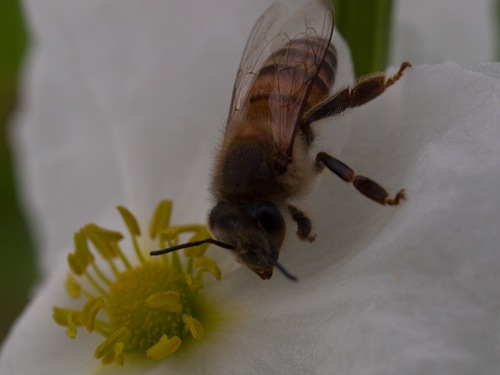The moth caterpillar that consumed much of the Thalia geniculata in the Catalina sector has come to the Palo Verde sector. I need to develop this…
|
|
|
Each morning, this anhinga is perched, drying his wings on one of the posts at my fence. Today, he was not dry enough to fly off when I reached the fence, so, after falling into the water, he made his way back up to the top of the post to dry completely. I was able to get about 5 m from him before he started to make a lot of noise….
A few minutes later, some of his feathers had dried, reflecting a lighter color, and he took off.
I received this message from Excel while working with some data yesterday afternoon. It’s good, because I was sick of getting those pesky error messages. This is an excellent solution to buggy software, Microsoft – elimination of the error message = elimination of the error.

 I have no idea if this is really an Africanized Honey Bee, but I have seen a couple of nests. Additionally, while working in the wetland or walking through the forest, large swarms of bees will occasionally fly overhead, presumably headed toward a new patch of flowers. It’s kind of intimidating when you hear the swarm… what if they decide to stop and descend?
I have no idea if this is really an Africanized Honey Bee, but I have seen a couple of nests. Additionally, while working in the wetland or walking through the forest, large swarms of bees will occasionally fly overhead, presumably headed toward a new patch of flowers. It’s kind of intimidating when you hear the swarm… what if they decide to stop and descend?
So far, I’ve identified two species of water-lily: Nymphaea puchella and the more common Nymphaea amazonum. N. pulchella is currently flowering and has a wavy margin on it’s floating leaves, while N. amazonum hasn’t begun flowering yet and seems to have smaller leaves. The flowers below are from N. pulchella.